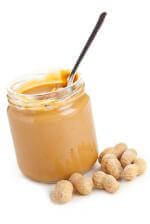Processed Foods: How Much Is Too Much?
Where do foods cross the line between “whole” and “processed” food?

I think we’d have no trouble agreeing that a Pringle’s potato chip is a “processed” food. But where exactly did it cross the line between whole and processed food? As soon as we washed the dirt off the potato? When we peeled it? When we ground it up? When we added sugar, salt, and preservatives? When we fried it?
According to the technical definition of food processing, canned tuna, soymilk, and peanut butter are all processed foods. So are pasteurized milk, filtered honey, frozen strawberries, and any vegetable that’s had the dirt washed off it. In truth, most food we come into contact with lies somewhere on a processing spectrum, ranging from “just plucked off the tree” to “I can’t even tell what food this used to be.”
I think it’s unrealistic–and unnecessary–to completely avoid all processed food. But every step you take toward the unprocessed end of the spectrum is a step in the right direction. If you’ve gotten your diet to the point that you’re worried about whether canned tuna, peanut butter, and frozen strawberries are too processed, you can probably relax.
See also:
Image courtesy of Shutterstock


